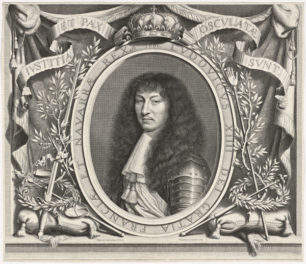
A portrait by Anton Raphael Mengs goes on view.
In this portrait, Spanish diplomat José Nicolás de Azara, Marquis of Nibbiano sits at a simple wooden table, his shirt collar is open, and his finger is inserted into a book, as if he has been interrupted while reading.
These informal aspects of the painting as well as the sensitive rendering of Azara’s features, including his expressive eyes and slight smile, hint at the relationship between the artist and his subject. Mengs and Azara were close friends.
The painting, a recent gift to the Getty, is particularly notable because of the nature of this friendship: a shared interest in the classical world at a time when the discovery of Roman antiquities was influencing artistic developments in 18th-century Europe.

Portrait of José Nicolás de Azara, Marquis of Nibbiano, Anton Raphael Mengs, 1779. 2019.132 Oil on canvas, 32 1/2 × 25 in. The J. Paul Getty Museum
Mengs: A Cosmopolitan Artist Skilled in Portraiture
Mengs was one of the most prolific European painters of the late 18th century and worked in several of Europe’s most important artistic centers. Born in the city of Aussig (now in the Czech Republic), his earliest major commission was a series of altarpiece paintings for the church of the Court of Saxony in Dresden.
Like many young artists in training, Mengs traveled to Italy to study antique sculpture and the works of Renaissance and Baroque masters. He then spent nearly a decade in Madrid as court painter to King Charles III of Spain.
But Mengs was most accomplished as a portrait painter, particularly during extended stays in Rome. Like his rival for portrait commissions, Pompeo Batoni, whose Portrait of John Talbot, later 1st Earl Talbot (1773) is also in the Getty collection, Mengs completed commissions for visiting dignitaries and aristocrats on the Grand Tour of Italy’s cultural monuments.

Portrait of John Talbot, later 1st Earl Talbot, Pompeo Batoni, 1773. 78.PA.211 on canvas, 108 1/2 × 72 1/4 in. The J. Paul Getty Museum
While Batoni depicts Talbot with cane and hat, gazing into the distance and surrounded by symbols of Rome’s classical heritage, Mengs’s painting focuses on Azara’s features, including his dimpled nose, full lips and fleshy neck, capturing the expressiveness of a face that he knew intimately.
Azara: A Dashing Spanish Diplomat
Mengs met Azara as early as the mid-1760s, when Azara requested the artist’s assistance in the design of a commemorative medal. Born to a wealthy family, Azara played an important diplomatic role in the court of King Charles III of Spain, as an agent to the Papal States and later as an ambassador to Napoleon I in Paris.
The friendship between Mengs and Azara blossomed in Rome, where they shared an intense interest in classical antiquity. Mengs established a studio there, to receive students and entertain guests. He visited the ongoing excavations of Roman ruins in Pompeii and Herculaneum and published a series of theoretical texts on painting that drew on his investigations of Greek and Roman art.
For his part, Azara established a well-stocked library, pursued a program to publish classical literature for new audiences, and built a collection of antique sculpture and cameos.
He also organized archaeological excavations. At Tivoli, the site of several ancient Roman villas, he unearthed what was, at the time, the only known bust of Alexander the Great, which he later gifted to Napoleon Bonaparte and is now in the Louvre Museum in Paris.
Painting Azara
In January 1774, Mengs and Azara crossed paths in Florence, where Mengs painted Azara’s portrait on panel. The work is now in the collection of the Prado Museum in Madrid and was the focus of a 2013 exhibition on the friendship between the two.
The Getty painting is a second version of the Prado picture, but on canvas rather than panel. While the exact circumstances of its commission are unknown, Mengs scholar Steffi Roettgen has speculated that Mengs may have painted the copy for Azara to give to a longtime lover, Giuliana Falconieri, a member of Rome’s high society.
Among paintings in the Getty collection, Portrait of Azara is perhaps most directly comparable to Francois-André Vincent’s Portrait of the Sculptor Roland (1797), another example in which the artist was both a friend and admirer of the sitter.

Portrait of the Sculptor Roland, François-André Vincent , 1797. Oil on canvas, 29 5/16 × 24 1/8 in. 2016.70 J. Paul Getty Museum
Like Mengs, Vincent employed many of the same tools—the casually elegant clothes, the parted lips, the natural hair and penetrating eyes—to grant his subject an intriguing combination of quiet dignity and psychological intensity.
Legacy of a Friendship
Portrait of Azara had an intriguing afterlife in later works of art produced after the artist’s death. In the 1780s, Azara commissioned two separate engravings of himself, inspired by the portrait. These served as a model for a twin bust of Azara and Mengs in a Janus-like configuration made by Giovanni Volpato in 1785, now in the Accademia Carrara in Bergamo.
Azara, who outlived Mengs by more than two decades, did his part to promote the legacy of his friend. In a biography of Mengs that he published in 1780, he eulogized him as a new Apelles, the famous painter of Ancient Greece.
“Mengs was widely recognized as one of the most sought-after portrait painters of his time,” says Davide Gasparotto, Senior Curator of Paintings. “It is particularly meaningful to have this particular picture at the Getty, given that Azara was such a passionate collector of classical antiquities.”
Portrait of José Nicolás de Azara, Marquis of Nibbiano is currently on view at the Getty Center in Gallery S202.




Comments on this post are now closed.